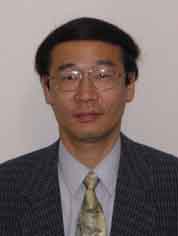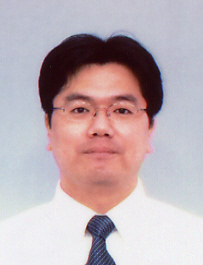| |
| |
Property Control of Crystalline Materials Laboratory |
 |
|
 |
| |
Defect Engineering of Environmentally Safe Materials
— Control and characterization of crystal defects for better properties |
| |
Because of increasing attention given to environmental safety, significant
research efforts have been made in developing new materials of high performance.
Light-weight high-temperature structural materials for aerospace applications,
thermoelectric materials for power generation and refrigeration, and hydrogen
absorbing materials for storage of clean energy sources are some of these
examples of developments. Our research interests in these materials include
| 1) |
establishing microstructure-property relationships,
|
| 2) |
nano-scale characterization of crystal defects and |
| 3) |
property improvements through defect engineering (nano-scale
control of defect structures). |
|
|
| |
|
|
| |
Academic staff |
|
| |
|
|
| |
| |
|
|
| |
 |
| Professor : Inui, Haruyuki |
| |
| Research Topics |
| |
| - |
New light-weight high-temperature
structural materials for aerospace applications. |
 |
| - |
Thermoelectric and hydrogen absorbing
intermetallic alloys to realize environmentally safe systems. |
 |
| - |
Transmission and scanning electron microscopy
as a new nano-scale characterization technique. |
|
| |
| Contact / Office |
Room 627, School of Engineering Science
Bldg, Yoshida Campus
TEL +81-75-753-5467 / FAX +81-75-753-5461
inui.haruyuki.3z kyoto-u.ac.jp kyoto-u.ac.jp |
|
| |
|
|
|
|
| |
|
|
| |
| |
|
|
| |
 |
| Associate Professor : Kishida, Kyosuke |
| |
| Research Topics |
| |
| |
| Contact / Office |
Room 621, School of Engineering Science
Bldg, Yoshida Campus
TEL +81-75-753-5461 / FAX +81-75-753-5461
kishida.kyosuke.6w kyoto-u.ac.jp kyoto-u.ac.jp |
|
| |
|
|
|
|
| |
|
|
| |
|
|
| |
 |
| |
|
|
| |
|
|
| |
|
|
| |
|
|
| |
New light-weight high-temperature structural materials for aerospace
applications |
|
| |
Because of ever-increasing demands for new light-weight high-temperature
structural materials that can be operated in a severe temperature and
oxidizing environment in aerospace applications, aluminides, silicides
and borides formed with transition-metals have been extensively investigated
in the last two decades in the world. We have investigated the deformation
and fracture behavior of these aluminides, silicides and borides mainly
in the form of single crystals. Our research interests include
| 1) |
fundamentals of crystal plasticity of
these intermetallics based on dislocation theory, |
 |
| 2) |
optimization of alloy chemistry based on crystal chemistry
for the ease of dislocation motion and |
 |
| 3) |
control of microstructures by directional solidification.
In particular, we have developed a technique where lamellar microstructures
characteristic of TiAl alloys are aligned parallel to the crystal
growth direction. |
|
|
| |
|
|
| |
|
|
| |
|
|
| |
|
|
| |
Transmission and scanning electron microscopy as a new nano-scale
characterization technique |
|
| |
| Crystal property often drastically changes depending
on the density and arrangement of crystal defects that are introduced
inevitably in the lattice. Nano-scale control of these crystal defects
is thus indispensable for property improvements of both structural
and functional materials. Although various nano-scale characterization
techniques have been developed, transmission electron microscopy
(TEM) has been one of the most powerful techniques, with the significant
progress being achieved in the last decade in terms of quantitativity
stemming from digital image acquisition. Our current research interests
include
| 1) |
applications of HAADF-STEM (high-angle
annular-detector dark-filed scanning TEM) imaging, which is
recently developed and is capable of chemical imaging (distinction
of atomic species) on atomic resolution and |
 |
| 2) |
development of a new electron diffraction method
for identification of polarity and chirality of noncentrometric
crystals. |
|
|
|
| |
|
|
| |
|
|
 |
|
|




Lamellar microstructure in directionally-solidified TiAl alloy.